Jordan Wright
December 14, 2011
In no specific order, we read, cooked, gobbled down and swooned over this year’s prolific crop of cookbooks. There were experiential books, back-to-the-farm books, compendiums, (Escoffier was reissued!) and books on baking that hitched their star to the cupcake craze. I chose ones that are unusual and memorable, with an important voice that rose above the din and others that might change the culinary paradigm forever.
Through decades of preparing recipes from the teetering piles of cookbooks in my personal collection, as a former restaurateur and private chef, added to countless hours spent reviewing restaurants, I try to imagine the flavor profile of the combinations of ingredients and techniques in recipes, often without so much as lifting a ladle. I use my culinary imagination, which is forever wired to my palate, reading a recipe for both flaw and flavor – a handy skill for evaluating the complex concoctions presented to a cookbook reviewer.
Winnowed down from the year’s abundant selection of enthusiastic chef/authors (save for a selection written by a scientist who has invented a new field of study called “neurogastronomy” and another marrying technology with kitchen wizardry), I selected nine from a veritable blizzard of tomes chock-a-block with photos luscious enough to make you want to gobble the pages. Four local writers are also featured for their contributions.
Months of bedtime reading were clocked, winnowing out and chucking the ones that are repetitive or recklessly composed. You won’t find those books listed here. On a positive note several books broke new ground and belong on every collector’s shelf.
Below is a list of my favorite cookbooks of the year. None are French. Sacre bleu! One is a re-issue, but deserves revisiting all the same.
Goat: Meat, Milk, Cheese by Bruce Weinstein and Mark Scarbrough (Stewart, Tabori & Chang)
The authors of this book have penned over 20 cookbooks, including The Ultimate Ice Cream Cookbook so chances are you have at least one in your collection. Weinstein and Scarbrough remind us that not only are goats a sustainable commodity but that they are “the most widely eaten meat across the globe”, though decidedly less in US kitchens.
Riding on the crest of the artisanal goat cheese fad they are positioned perfectly to take us to the next level – how to prepare and serve goat meat. In this latest of their ventures they provide a myriad of recipes (and humorous tales) celebrating goat cheeses and the now readily available goat’s milk. But it is the introduction to the many cuts and uses of goat meat and the rich, deep flavors it brings to roasting, stewing and grilling that are exciting and new.
So strike up a friendship with your nearest halal butcher and try the Braised Goat Meatballs with Artichokes and Fennel, Goat Shanks with Cabbage, Port and Vanilla or the sweet dessert-like Goat Cheese Tamales, a Southwestern treat.
Noma: Time and Place in Nordic Cuisine by René Redzepi (Phaidon)
The most exquisitely elegant cocktail table-sized book this year harkens from René Redzepi, whose Copenhagen restaurant, Noma, is now considered the most innovative cuisine in the world, relegating the now-shuttered elBulli, his former employer, to the back burner. Written in diarist style, Redzepi takes us on a “North Atlantic study tour” beginning three months before the opening of Noma in 2003 to the present. We tromp along with the intrepid gastronome through Sweden for lingonberries and Blue Ducks; Denmark for birch sap, rowan shoots and bark; and Greenland for rosenrod, and campanula, a sweet tasting blue flower that grows along the moors and is used for vinegars, marmalades and parfaits. Lavish photos by Ditte Isager .
Whether you will actually cook from this book is not the point, but you will be inspired, as I predict will all chefs worth their sea salt once they crack the spine – tripping over each other to source the exotica – Icelandic moss, spruce shoots and reindeer. This is a love story – a romance of the Nordic land, sky and sea – and an inspiration to the forager inherent in us all.
Neurogastronomy – How the Brain Creates Flavor and Why It Matters by Gordon M. Shepherd (Columbia University Press)
Far be it from me to claim any knowledge of chemistry past the years-ago high school version I took, barely passing the class to the threat, “Here’s a C, now don’t come back!” But in a book on a subject he seems to have invented, neuroscientist, Gordon Shepherd, carves up a well-researched explanation for why Proust so craved the madeleine. Apparently it’s all about “smell and flavor and their relationship to the neural basis of consciousness, ” the Yale professor convincingly claims – all without recipes. If you can follow this weighty topic filled with references to the olfactory cortex, and if combinatorial interactions are in your vocabulary, you are going to have a lot of fun figuring out how to get the kids to eat their veggies and to look back in wonder at what an evocative experience it was. This explanation of the science of flavor and memory might just fire up your receptors and synapses for a swell tour through the laboratory of your sensors!
Plenty by Yotam Ottolenghi (Chronicle Books)
At last this searingly-hot UK chef, whose has four traiteur-style delis and a single sit-down eponymously-named restaurant, has brought his latest book across the pond – thankfully translated from the metric system – to better serve the American cook. Using a casually conceptual approach (chapters are organized by ingredients) he has blessed the reader with his stylishly imaginative approach to cooking. He focuses on one central ingredient, which he then enhances, and as he says “elaborates” on, only to keep the ingredient at the center of the final dish. The sleek line drawn cover belies its ramped-up vegetarian options and scrumptious desserts.
Ottolenghi, who was born in Israel to a German mother and Italian father and writes a column called “New Vegetarian” for Britain’s Guardian Weekend Section, provides many of his most intriguing recipes from his column (along with gorgeous photos from Jonathan Lovekin) like Turkey and Sweet Corn Meatballs with Red Pepper Sauce and Raspberry and Peach Tea Cakes or Sour Cherry Amaretti. For a simple winter weekend dinner try the Caramelized Garlic Tart with Winter Cole Slaw made with apples and celeriac.
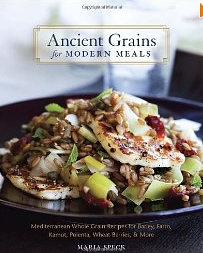
Ancient Grains for Modern Meals: Mediterranean Whole Grain Recipes for Barley, Farro, Kamut, Polenta, Wheat Berries & More by Maria Speck
Ancient Grains for Modern Meals: Mediterranean Whole Grain Recipes for Barley, Farro, Kamut, Polenta, Wheat Berries & More by Maria Speck (Ten Speed Press)
As far as I’m concerned there are not enough chefs serving whole grains and pulses. My sense is that they are not perceived to be posh enough ingredients for fine dining. I hope that will change soon and proteins can take a lesser role in high-end restaurants. Along comes Maria Speck who not only triumphs that notion but also offers plenty of recipes to guide you along – Barley Salad with Figs and Tarragon-Lemon Dressing, Leek Salad with Grilled Haloumi Cheese and Rye Berries, Lamb Stew with Wheat Berries in Red Wine Sauce, and Purple Rice Pudding with Rose Water. This whole grain primer belongs on every nutritiously conscious cook’s shelf.
Modernist Cuisine – The Art and Science of Cooking by Nathan Myhrvold, Chris Young, and Maxime Bilet (The Cooking Lab)
Three modern day Escoffiers set out to write the ultimate guide to cooking, replete with the nouvelle vague of high-flying molecular gastronomy acrobatics. It will be eons before there will be anything more comprehensive than this six-volume compendium. Dazzling, iconic and courageous!
Spirit of the Harvest – North American Indian Cooking by Beverly Cox and Martin Jacobs (Stewart, Tabori and Chang)
This reissue was a James Beard and IACP award-winner for good reason. It is a well-researched book filled with over 150 traditional recipes from native cultures – Cherokee, Navaho, Comanche, Chippewa, Hopi and many others.
Recipes are accompanied by tribal lore and legends and include uses for indigenous ingredients like cholla cactus, chokecherries and Jerusalem artichokes. Stunning photography by Jacobs incorporates artifacts and objects. Divided into five major US regions, you’ll enjoy preparing Cherokee Pecan Soup and Oneida Sauteed Morels from the Northeast to Olympia Oyster-Potato Cakes from the Northwest. Zuni Corn Soup, a specialty from the Southwest and Pueblo Roast Turkey with Pinon-Raisin Stuffing would be standouts on any holiday table.
FYI: The closest restaurant for sampling regional native cuisine is Mitsitam Café, at the Smithsonian’s National Museum of the American Indian (my all-time favorite lunch spot on the National Mall), serving up regional native cuisine. Their popular Mitsitam Café Cookbook is filled with recipes from the café.
Food Trucks – Dispatches and Recipes from the Best Kitchens on Wheels by Heather Shouse (Ten Speed Press)
A world away from the bastions of fine dining and haute cuisine comes the food truck – now establishing itself as the counterculture’s kitchen-on-wheels for foodies that eschew formal restaurants but love great food. Shouse has been on a countrywide mission to find the “best of” and has done a bang up job uncovering this burgeoning underground food scene. Follow her map and you could be chowing down on some the nation’s most creative gourmet-leaning fast food bites.
Filled with snapshots from the road, the book gives recipes for Winter Squash Soup from Oregon resident and Thai native, Nong Poonsukwattana’s sidewalk cart; Butter Chicken from DC chef Farhad Assari’s Sâuçá truck; and Laurent Katgely’s recipe for Braised Beef Cheeks Sandwich from his gleaming silver truck in San Francisco’s South of Market District. This stuff is big on flavor light on formalities. Use twitter to keep up with these chefs on the move.
The Sweets of Araby by Leila Salloum Elias and Muny Salloum (Countryman Press)
Channeling the “Tales of the 1001 Arabian Nights” and other medieval texts for inspiration, these Syrian sisters draw back the veil on some of the most delicious and elusively recorded recipes for Arabic sweets. Culled from 10th century Arab culinary manuscripts the authors (who are also professional scholars and historians) tested and tweaked countless recipes to arrive at this exotic and authentic collection, the likes of which have never before been published. With charming brightly colored art by Linda Dalal Sawaya, this beautiful, evocative book of recipes and ancient stories is a treasure as rich and mysterious as the alluring tales from Scheherazade’s lips to her husband King Shahryar’s ears.
Local and Notable
The Glorious Pasta of Italy by Domenica Marchetti (Chronicle Books)
Spoiler alert. This writer is partial to the author/chef whose cuisine she has sampled from Marchetti’s own hand.
Rustic and approachable these dishes are bold, elemental and divinely delicious. Not just another Italian cookbook, this is food to impress your guests as well as shine at a potluck supper. Of course, if you bring one of these dishes, be prepared for an onslaught of impending invites. Slow-cooked Pot Roast Papardelle; Maccheroni Alla Chitarra with Ragu All’Abruzzese and Palottine (mini ground veal meatballs); and dishes made for the holidays with sweet pasta dough – La Cicerchiata are tiny fried dough balls held together with honey and decorated with almonds. These recipes highlight the many different styles of cooking in Italy and reveal the author’s passion for her roots.
Serve Yourself by Joe Yonan (Ten Speed Press)
Dinner for one (known in waiter-speak as DFO) has never seemed so appealing as when Yonan presents one of his ratcheted down recipes. This James Beard Award-winning food editor of the Washington Post has found an underserved niche and filled the void with ethnically eclectic recipes that anyone can cook.
Let’s start with dessert, no one does but we all would like to. I am all over the Cardamom-Brown Sugar Snickerdoodles, ditto for the Spicy Coconut Sorbet that uses a dash of tequila. Imagine that in your next margarita! But just try keeping a fellow diner at bay when you tell them you are home alone eating Duck Breast Tacos with Plum Salsa or Fig, Taleggio and Radicchio Pizza that can be made on the flipside of a cast iron pan. There are lots more neat solo tricks and super healthful recipes to glean from this seasoned chef and writer of the delightful “Cooking for One” column.
For Cod and Country: Simple. Delicious. Sustainable. by Barton Seaver (Sterling Epicure)
Barton Seaver is a human lighthouse for the sustainable fishing industry. A former DC area chef, he has taken his mission around the globe earning him recognition and kudos. The National Geographic Society awarded him a fellowship, and he is a sought-after lecturer on topics ranging from sustainability to protecting the environment.
Seaver is well known in Washington for his career as a local chef, working with Jose Andres at Jaleo, Executive Chef of Café Saint-Ex, and later at Bar Pilar. His sustainable seafood restaurant Hook in Georgetown, was named Bon Appétit’s Top 10 Eco-Friendly Restaurants. In one year alone the restaurant had over 75 different species of seafood on its menu. He was named Esquire magazine’s 2009 “Chef of the Year,” and in 2008, was honored as a “Seafood Champion” by the Seafood Choices Alliance and as “Rising Culinary Star of the Year” by the Restaurant Association of Metropolitan Washington.
His first book, organized by seasons (Yes! Most fish have seasons too!), is a collection of recipes based on seafood that hasn’t been overfished or harvested using destructive methods. Seaver shows it can be done with simply prepared and flavorful dishes for the average cook. Grilled Clams with Lemon-Chive Butter, Crab and Corn Toast and Smoked Bluefish Spread are a few of the seafood recipes that beckon. But there are lots of side dish, grains and veggie recipes, perfect for pairing with the seafood.
Beyond the Red Sauce – Classic Italian Cooking Without Tomatoes by Matt Finarelli (Self published by www.finarelli.com)
Using a novel approach to Italian cooking, by eliminating the use of one of its most familiar ingredients, this highly personable DC cooking instructor thinks out the proverbial box. Emphatic about his love for the red fruit, he nonetheless challenges the reader with over 100 recipes that skirt around it. That the tomato is primarily a Southern Italian ingredient, still leaves him with a plethora of Northern climes from which to source his recipes. Star dishes include Farfalle with Mascarpone, Asparagus, Hazelnuts and Smoked Salt; Roasted Branzini with Arugula, Prosciutto and Lemon; and a lovely Orange Vanilla Panna Cotta.
Finarelli is a local chef with a huge fan base from the classes he conducts at Sur La Table in Pentagon Row, CulinAerie in DC, Open Table in Falls Church and the Adult Ed programs in Fairfax County. Few cookbook authors spend real time answering basic cooking questions. Even fewer have faced their readers in a kitchen setting. In his young career he estimates he has taught over a thousand budding cooks who he continues to empower and encourage. You won’t find glossy pages filled with alluring photos, but you will be guided by a gentle teacher with a terrific sense of humor whose driving force is sharing his knowledge and experience.

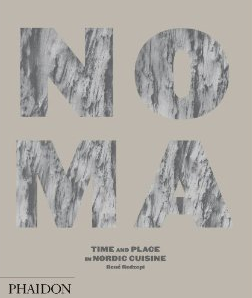
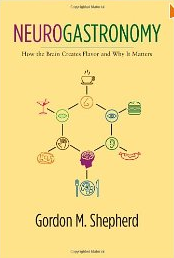
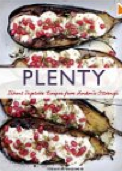
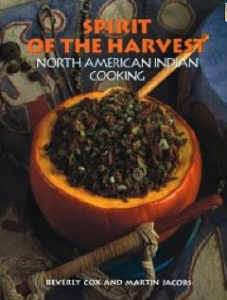
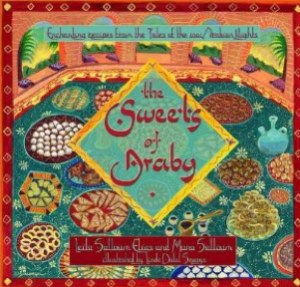
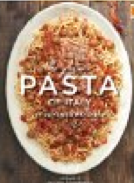
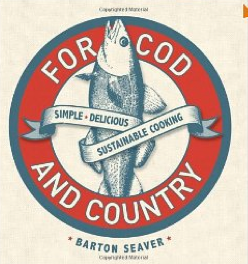
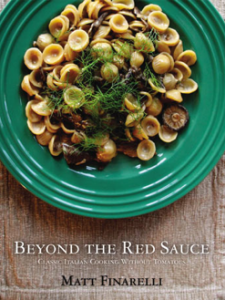
Leave a Reply